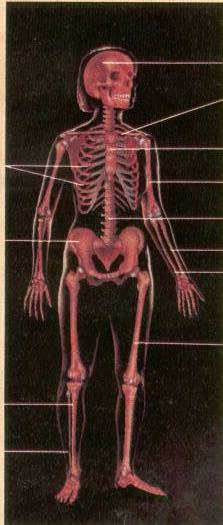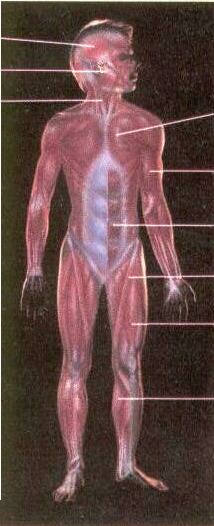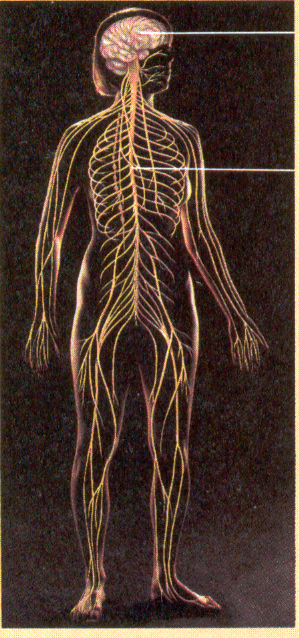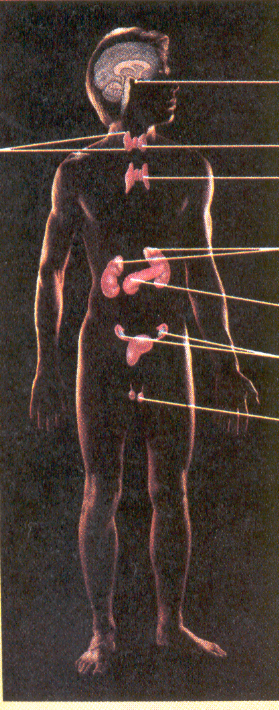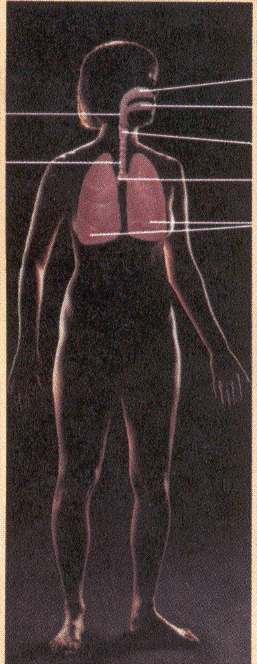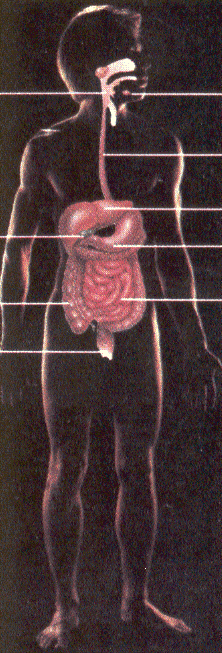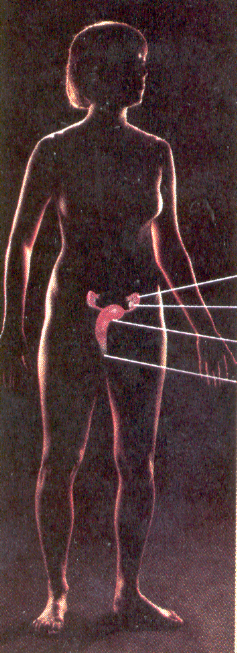
- •I.В. Знаменська
- •Contents
- •Передмова
- •Hippocratic oath
- •Unit 1 lesson 1
- •Vocabulary
- •Phonetics
- •Grammar:
- •(Interrogative Form)
- •(Negative Form)
- •To have
- •Pronoun
- •Reading and developing speaking skills
- •I am a medical student
- •Personal Information Sheet
- •1. Tell your fellow-students about yourself.
- •2. Describe your family to your new friend.
- •3. Show a friend your family album and answer all his/her questions.
- •Ex. 38. You want to get some information about your patient. Ask him/her questions using the expressions of 36thexercise. Overview
- •Lesson 2
- •Vocabulary
- •Phonetics
- •Grammar: word order in a statement
- •Article
- •Reading and developing speaking skills
- •Ukrainian medical stomatological academy
- •Medical university
- •Overview
- •Lesson 3
- •Vocabulary
- •Rules of reading
- •Vowels (голосні)
- •Word-building
- •Reading and developing speaking skills
- •Medical education in ukraine
- •Overview
- •Vocabulary
- •Rules of reading
- •Word-building
- •Grammar:
- •(Interrogative Form)
- •Reading and developing speaking skills
- •Medical education in the usa
- •Medical education in the united kingdom
- •Overview
- •Vocabulary
- •Rules of reading
- •Word-building
- •Grammar:
- •Forms of the verb
- •Reading and developing speaking skills
- •Profession of the physician
- •How often should I consult my physician
- •Overview
- •Vocabulary
- •Rules of reading
- •Grammar:
- •Impersonal sentences
- •Reading and developing speaking skills
- •Ex. 9. What famous physicians of the present do you know? What field of medicine do they work in?
- •Prominent scientists and physicians of ukraine
- •Vocabulary
- •Rules of reading
- •Grammar:
- •Simple tenses (Affirmative Form, Active Voice)
- •Reading and developing speaking skills
- •Public health service in ukraine
- •Overview
- •Vocabulary
- •Rules of reading
- •Word-building
- •National health service in the united kingdom
- •Vocabulary
- •Rules of reading
- •Word-building
- •Grammar:
- •Simple tenses (Interrogative Form, Active Voice) General Questions
- •Special Questions
- •Reading and developing speaking skills
- •Polyclinic
- •Overview
- •Medical examination
- •Vocabulary
- •Rules of reading
- •Reading and developing speaking skills Ex. 7. Read vocabulary and memorize new words. Ex. 8. Compose 5-6 sentences using the words of the vocabulary
- •At the therapeutist's
- •Overview
- •Rules of reading
- •Word-building
- •Grammar:
- •Open conditionals
- •Numeral
- •Vocabulary
- •Reading and developing speaking skills
- •Hospital
- •Ex. 19. Translate the following sentences into English:
- •Overview
- •Vocabulary
- •Rules of reading
- •Reading and developing speaking skills
- •At the physician's
- •1. In what order you might ask these questions; 2. In what form you might ask them:
- •Overview
- •Lesson 13
- •Vocabulary
- •Rules of reading
- •Grammar:
- •Modal verbs
- •Equivalents of the modal verbs
- •Reading and developing speaking skills
- •Chemist’s shop
- •Your home medicine chest
- •Overview
- •I. Insert the missing words:
- •II. Finish the following sentences:
- •III. Choose the proper term given below to the following definitions:
- •IV. Read and translate one of the following texts:
- •Galen (philosopher, physician, discoverer of blood and the cranial nerves)
- •World health organization
- •V. Speak on the following topics:
- •Vocabulary
- •Rules of reading
- •Word-building
- •Grammar:
- •Simple tenses (Passive Voice, Affirmative Form)
- •Passive voice:
- •Reading and developing speaking skills
- •Body regions
- •Vocabulary
- •Rules of reading
- •Word-building
- •Grammar:
- •Simple tenses (Passive Voice, Interrogative Form)
- •General Questions
- •Special Questions
- •Reading and developing speaking skills Ex. 8. Insert the missing letters and translate the following words:
- •Ex. 12. Read the following text: trunk
- •Body cavities
- •Directional terms for humans
- •Vocabulary
- •Reading and developing speaking skills
- •Lesson 18
- •Vocabulary
- •Rules of reading
- •Word-building
- •Grammar:
- •Perfect tenses (Active Voice, Affirmative Form)
- •Modal verbs: should and would
- •Reading and developing speaking skills
- •Ex. 18. Do you agree, disagree or partially agree with the statements below:
- •Cell division
- •Ex. 25. Answer the following questions:
- •Vocabulary
- •Rules of reading
- •Reading and developing speaking
- •Tissues
- •Classification of Epithelium
- •Tissues and organs
- •Functions and Location of Tissues.
- •Vocabulary
- •Reading and developing speaking
- •Organ systems
- •Ex. 16. Translate the following sentences into English:
- •Overview
- •Vocabulary
- •Rules of reading mute letters (“німі” літери)
- •Word-building
- •Grammar:
- •Participle I (v4)
- •Continuous tenses (Active Voice, Affirmative Form)
- •Reading and developing skills
- •Skeleton
- •Ex. 26. Read the following words and try to memorize them:
- •Bone's structure
- •Overview
- •Lesson 22
- •Vocabulary
- •Reading and developing speaking skills
- •Fractures, dislocations, sprains, and strains
- •Fractures
- •Dislocations
- •Sprains
- •Strains
- •The signs of fractures, dislocations, sprains, and strains
- •Ex. 11. What types of dislocations and fractures do you know? Can you explain the meaning of the following terms:
- •Types of fractures
- •First aid
- •At the traumatologist’s
- •Overview
- •Vocabulary
- •Rules of reading mute letters (“німі” літери)
- •Word-building
- •Grammar:
- •Continuous tenses (Active Voice, Interrogative Form)
- •Reading and developing speaking skills
- •Muscles
- •Ex. 23. Make up a detailed plan of the text "Muscles".
- •Ex. 26. Read the following text and answer the question: Is the body-building useful for modern people? body-building
- •Overview
- •Vocabulary
- •Reading and developing speaking skills Ex. 1. Insert the missing letters:
- •Emergency care of wounds
- •Overview
- •Vocabulary
- •Rules of reading mute letters (“німі” літери)
- •Word-building
- •Grammar:
- •Continuous tenses (Passive Voice, Affirmative Form)
- •Indefinite pronouns and adverbs
- •Reading and developing speaking skills
- •Digestive system
- •Portions of the digestive system
- •Gallbladder
- •Pancreas
- •Large intestine
- •The alimentary tract
- •At the gastroenterologist’s
- •Overview
- •Vocabulary
- •Word-building
- •Reading and developing speaking skills
- •Stomach
- •Stomach functions
- •Vocabulary
- •Word-building
- •Grammar:
- •Perfect tenses (Passive Voice, Affirmative Form)
- •Reading and developing speaking skills
- •Overview
- •Lesson 28
- •Vocabulary
- •Word-building
- •Grammar:
- •Perfect tenses (Passive Voice, Interrogative Form)
- •Reading and developing speaking skills
- •Ex. 8. Translate the following words and word-combinations into Ukrainian:
- •Ex. 14. Answer the following questions:
- •Formed elements of the blood
- •Platelets
- •Leukocytes
- •Overview
- •Vocabulary
- •Word-building
- •Grammar:
- •Perfect tenses
- •(Passive Voice)
- •(Revision)
- •Object clauses
- •Reading and developing speaking skills
- •Blood groups
- •Ex. 19. Find the corresponding Ukrainian equivalents for the English terms:
- •Ex. 20. Pronounce and memorize the words to the theme studied:
- •Ex. 21. Read the following text: blood transfusion
- •Summary
- •І. Головна тема чи проблема:
- •Іі. Мета вивчення:
- •Ііі. Зазначення основних положень:
- •IV. Применение на практике
- •V. Висновки та результати:
- •Overview
- •Vocabulary
- •Word-building
- •Attributive clauses
- •Reading and developing speaking skills
- •Suggestions for useful phrases:
- •Ex. 27. Translate the following interrogative sentences into English:
- •Heart chambers
- •Vessels
- •Vocabulary
- •Word-building
- •Grammar:
- •Adverbial clauses
- •Reading and developing speaking skills
- •Blood vessels
- •General features of blood vessel structure
- •Lesson 32
- •Vocabulary
- •Word-building
- •Grammar: subordinate clauses
- •Reading and developing speaking skills
- •The cardiac cycle
- •At the cardiologist’s
- •Overview
- •Lesson 33
- •II. Insert the correct form of the verb:
- •III. Translate the following sentences:
- •IV. Read and translate one of the following texts: Text a disorders of the heart and blood vessels
- •Text b atherosclerosis
- •Text c leukemia
- •Text d digestive system
- •Peptic ulcer
- •Text f gastritis
- •V. Speak on the following topics:
- •Appendix 1
- •Irregular verbs
- •Appendix 2 suffixes and term-elements
- •Term elements of greek and latin origin greek, latin, english and ukrainian equivalents
- •Короткий довідник з правил словотворення
- •Найуживаніші суфікси англійської мови:
- •Основні префікси:
- •Practical grammar guide
- •(Короткий граматичний довідник)
- •Іменник
- •(Cases)
- •Артикль (article)
- •Займенники (pronouns)
- •Прикметник (adjective)
- •Найвищий ступінь порівняння прикметників (Superlative Degree)
- •Порядок слів у реченні.
- •Побудова розповідних і питальних речень
- •Способи визначення присудка в англійському реченні
- •Неозначено-особові речення
- •Безособові речення.
- •Форми дієслова forms of the verb
- •Часи групи simple (indefinite) present simple
- •Past simple
- •Future simple
- •Simple tenses
- •Часи групи continuous
- •Present continuous
- •Past continuous
- •Future continuous
- •Continuous tenses
- •Perfect tenses
- •Present perfect
- •Past perfect
- •Future perfect
- •Perfect tenses
- •Стан дієслова
- •Passive voice
- •Зведена таблиця часів стверджувальної форми
- •Зведена таблиця питальної форми
- •Interrogative form
- •Дієслова to be та to have
- •Ознаки функціональної відмінності дієслова to be
- •Модальні дієслова (modal verbs)
- •Модальне дієслово can
- •Модальне дієслово could
- •Модальне дієслово may
- •Модальне дієслово must
- •Ознаки розпізнавання граматичних форм, утворених за допомогою допоміжних дієслів should I would
- •Підрядні додаткові та означальні речення (object clauses)
- •Виділення членів речення за допомогою підсилювальної конструкції it is (was, will be) ... That (who, which)
- •Умовний спосіб
- •(Infinitive)
- •Об’єктний інфінітивний комплекс (Objective Infinitive Construction)
- •Дієприкметник
- •Об’єктний дієприкметниковий комплекс (Objective Participle Construction)
- •The Objective Participle Construction перекладається підрядним реченням зі сполучником “як”: I saw them walking along the street. – я бачив, як вони йшли по вулиці. Герундій (gerund)
- •Форми герундія
- •Герундіальний комплекс (зворот) (Gerund Construction)
- •Узгодження часів у підрядному додатковому реченні
- •Vocabulary список використаної літератури
- •І.В. Знаменська о.О. Пісоцька в.Г. Костенко
Vocabulary
|
integumentary [In:tIgju'mentqrI] покривний cardiovascular ['ka:dIqu'vxskjulq] серцево-судинний respiratory [rIs'paIqrqt(q)rI] дихальний digestive [dI'GestIv] травний urinary ['juqrInqrI] сечовий sweat [swet] потовий posture ['pOsCq] постава heat [hI:t] теплота nervous ['nq:vqs] нервовий receptor [rI'septq] рецептор major ['meIGq] головний intellectual [IntI'lektjuql] розумовий endocrine ['endqukraIn] ендокринний |
participate [pa'tIsIpeIt] брати участь nutrient ['njutrIqnt] поживна речовина hormone ['hO:mqun] гормон combat ['kOmbqt] боротися oxygen ['OksIGqn] кисень carbon dioxide ['ka:bqn daI'OksaId] вуглекислий газ elimination [I"lImI'neISn] видалення, виведення wastes products [weIsts] продукти відходів ion ['aIqn] іон balance ['bxlqns] рівновага gonad ['gOnxd] статева залоза genitals ['GenItlz] статеві органи accessory [qk'sesqrI] додатковий, допоміжний passage ['pxsIG] прохід, протока |
Reading and developing speaking
Ex. 1. Insert the missing letters:
Elim_nation; horm_ne; ox_gen; n_trient; carbon dio_ide; parti_ipate; endo_rine; ne_vous; swe_t; di_estive, hea_t; l_ng; bl_od.
Ex. 2. Match the medical terms and their translation:
|
1. integumentary 2. skeletal 3. muscular 4. nervous 5. endocrine 6. cardiovascular 7. lymphatic 8. respiratory 9. digestive 10. urinary 11. reproductive |
1. дихальний 2. сечовий 3. покривний 4. статевий 5. м’язовий 6. скелетний 7. ендокринний 8. лімфатичний 9. нервовий 10. травний 11. серцево-судинний |
Ex. 3. Translate the following words and word-combinations into Ukrainian:
Combine; subdivide; peripheral nervous system; major organ systems; respiratory; digestive; integumentary; sweat gland; protect; gonad; circulatory system; kidney; urinary bladder; urine; remove; esophagus; stomach; small and large intestines; digestion; nutrient; foreign substances; sensory receptors; allow body movements.
Ex. 4. Read the following words and word-combinations:
Regulate temperature; prevent; cartilage; muscle; maintain posture; body heat; spinal cord; receive; metabolism; reproduction; pump; blood; throughout; remove; balance; respiratory passage; carbon dioxide; stomach; chemical process.
Ex. 5. Read the following text:
Organ systems
An organ system is a group of organs classified as a unit because of a common function or set of functions. The classification of organ systems is somewhat arbitrary. For example, the muscular and skeletal systems can be combined as the musculoskeletal system, or the nervous system can be subdivided into the peripheral and central nervous systems.
The human organism is divided into the following major organ systems: the integumentary, skeletal, muscular, nervous, endocrine, cardiovascular, lymphatic, respiratory, digestive, urinary, and reproductive systems.
The integumentary system consists of skin, hair, nails, and sweat glands. This system protects, regulates temperature, and prevents water loss.
The skeletal system includes bones, ligaments, cartilages, and joints. It protects internal organs, supports, and allows body movement, produces blood cells, and stores minerals.
The muscular system consists of muscles attached to the skeleton. This system allows body movement, maintains posture, and produces body heat.
The nervous system includes brain, spinal cord, nerves, and sensory receptors. It is a complex information system. It receives, processes and communicates information.
The endocrine system consists of endocrine glands. This system participates in the regulation of metabolism, reproduction, and controlling a large number of activities.
The cardiovascular system includes heart, blood vessels, and blood, which is pumped through the blood vessels by the heart. It transports nutrients, waste products, gases, and hormones throughout the body; plays a role in the regulation of body temperature.
The lymphatic system consists of lymph vessels, lymph nodes, and other lymph organs. This system removes foreign substances from the blood and lymph, maintains tissue fluid balance, and absorbs fats.
The respiratory system includes lungs and respiratory passages. It exchanges gases (oxygen and carbon dioxide) between the blood and the air and regulates blood pH.
The digestive system consists of mouth, esophagus, stomach, intestines, and accessory structures. This system performs the mechanical and chemical processes of digestion, absorption of nutrients, and elimination of wastes.
The urinary system includes kidneys, urinary bladder, and ducts that carry urine. It removes waste products from the circulatory system; regulates blood pH, ion balance, and water balance.
The reproductive system consists of gonads, accessory structures, and genitals of males and females. This system performs the processes of reproduction and controls sexual functions.
Ex. 6. Translate the following words and word-combinations into English:
Додатковий, допоміжний; покривний; нервовий; серцево-судинний; дихальний; травний; м’язовий; скелетний; сечовий; потовий; шкіра; запобігати втраті води; головний; кістка; суглоб; хрящ; зв’язка; розумовий; ендокринний; підтримувати поставу; мозок; чутливий рецептор; спинний мозок; брати участь; поживна речовина; серце; кров’яні судини; нагнітати; гормон; боротися; стороння речовина; нирки; сечовий міхур; протока; кисень; вуглекислий газ; видалення.
Ex. 7. Translate text "Organ Systems" into Ukrainian.
Ex. 8. Describe the systems of the body using the data of the following table:
MODEL:
The _system consists of / includes _ (major components).
This system _ (functions).
|
|
SYSTEM |
|
MAJOR COMPONENTS |
FUNCTIONS |
|
|
Integumentary system |
|
Skin, hair, nails, and sweat glands |
Protects, regulates temperature, prevents water loss |
|
|
Skeletal system |
|
|
|
|
ribs
pelvis
tibia
fibula
|
|
skull clavicle
sternum humerus vertebral column radius ulna
femur |
Bones, associated cartilages, and joints |
Protects, supports, and allows body movement, produces blood cells, and stores minerals
|
|
|
Muscular system |
|
|
|
|
temporalis masseter
sternocleidomastoid
|
|
pectoralis major
biceps
rectus abdominus
sartorius
quadriceps
gastrocnemus |
Muscles attached to the skeleton |
Allows body movement, maintains posture, and produces body heat |
|
|
Nervous system
|
brain
spinal cord |
Brain, spinal cord, nerves, and sensory receptors |
Detects sensation, controls movements, controls physiological and intellectual functions |
|
|
Endocrine system |
|
|
|
|
parathyroids (behind thyroid) |
|
pituitary thyroid thymus adrenals
pancreas ovaries (in females) testis (in males) |
Endocrine glands such as the pituitary, thyroid, and adrenal glands |
Participates in the regulation of metabolism, reproduction, and many other functions |
|
|
Cardiovascular system |
|
|
|
|
carotid artery jugular vein
brachial artery |
|
superior vena cava pulmonary artery
heart aorta inferior vena cava
femoral artery and vein
|
Heart, blood vessels, and blood |
Transports nutrients, waste products, gases, and hormones throughout the body; plays a role in the immune response and the regulation of body temperature |
|
|
Lymphatic system |
|
|
|
|
right lymphatic duct
thoracic duct |
|
thymus gland
spleen
lymph node |
Lymph vessels, lymph nodes, and other lymph organs |
Removes foreign substances from the blood and lymph, combats disease, maintains tissue fluid balance, and absorbs fats
|
|
|
Respiratory system |
|
|
|
|
pharynx trachea |
|
nasal cavity oral cavity larynx bronchus lungs |
Lungs and respiratory passages
|
Exchanges gases (oxygen and carbon dioxide) between the blood and the air and regulates blood pH |
|
|
Digestive system |
|
|
|
|
pharynx
gallbladder
large intestine
rectum |
|
salivary gland
esophagus
liver stomach small intestine |
Mouth, esophagus, stomach, intestines, and accessory structures
|
Performs the mechanical and chemical processes of digestion, absorption of nutrients, and elimination of wastes
|
|
|
Urinary system |
|
|
|
|
urethra |
|
kidney ureter
bladder
|
Kidneys, urinary bladder, and ducts that carry urine
|
Removes waste products from the circulatory system; regulates blood pH, ion balance, and water balance
|
|
|
Reproductive system |
|
|
|
|
ductus deferens
epididymis |
|
seminal vesicle prostate gland testis penis
uterine tube ovary uterus vagina |
Gonads, accessory structures, and genitals of males and females |
Performs the processes of reproduction and controls sexual functions and behaviors |
Ex. 9. Answer the following questions:
1. What systems does the human body consist of? 2. What are the major components of the integumentary system? 3. What are the major components of the skeletal system? 4. What does the muscular system consist of? 5. What are the major components of the nervous system? 6. What does the endocrine system consist of? 7. What are the major components of the cardiovascular system? 8. What does the lymphatic system consist of? 9. What are the major components of the respiratory system? 10. What are the major components of the digestive system? 11. What are the major components of the urinary system? 12. What does the reproductive system consist of? 13. What is the function of the integumentary system? 14. What is the function of the skeletal-muscular system? 15. What is the function of the cardiovascular system? 16. What is the function of the reproductive system? 17. What is the function of the digestive system? 18. What is the function of the endocrine system? 19. What is the function of the urinary system? 20. What is the function of the reproductive system?
Ex. 10. Insert the missing words:
1. The body is divided into 11 major organ systems: integumentary, _, muscular, nervous, endocrine, _, lymphatic, respiratory, _, urinary, and reproductive systems. 2. The skeletal system includes bones, associated _, and joints. 3. It protects, _, and allows body movement. 4. The muscular system consists of _. 5. This system allows body _. 6. The cardiovascular system includes heart, blood _, and blood. 7. It transports _.
Ex. 11. Make up the sentences using the following words and word-combinations:
1. The nervous system / brain / and / includes / spinal cord /nerves. 2. It / physiological / intellectual functions / controls / and. 3. Includes / respiratory passages / the respiratory system / lungs / and. 4. Between / it / exchanges / the blood / gases / and / the air. 5. Intestines / the digestive / mouth / system / consists of / esophagus / and / stomach. 6. Chemical / this / system / digestion / the mechanical / and / performs / processes / of.
Ex. 12. Write out key sentences of the text "Organ Systems".
Ex. 13. Compose the plan to the text "Organ Systems".
Ex. 14. Speak on the systems of the human body.
Ex. 15. Make up a dialogue on the systems of the human body.

